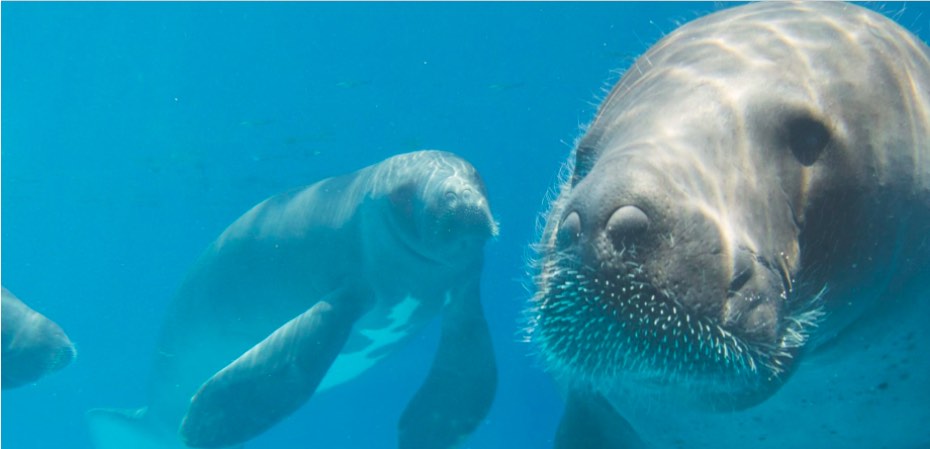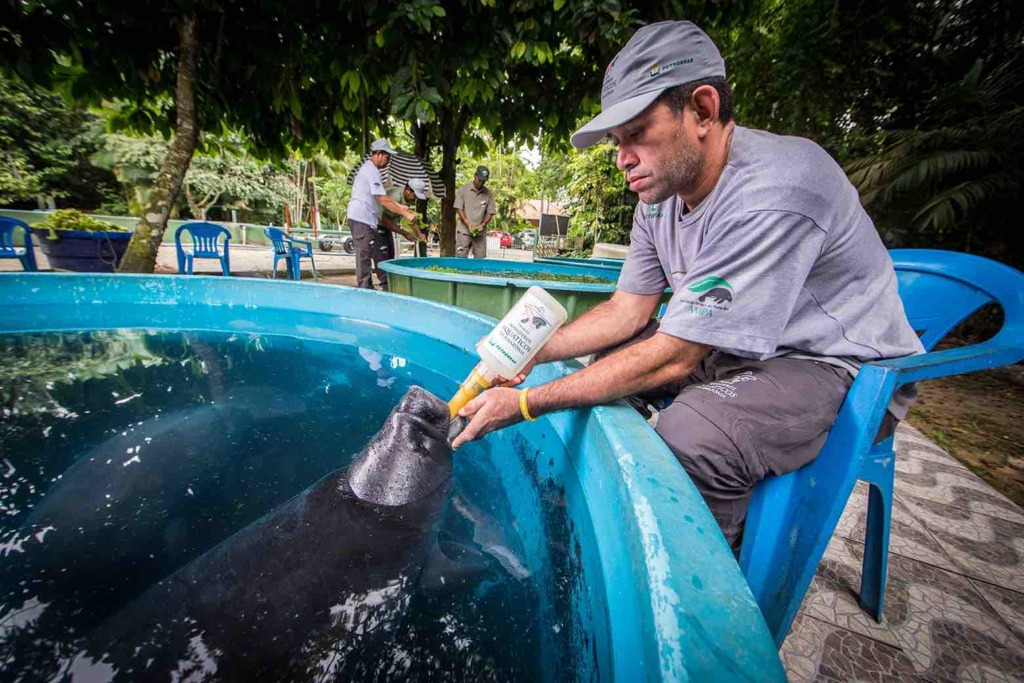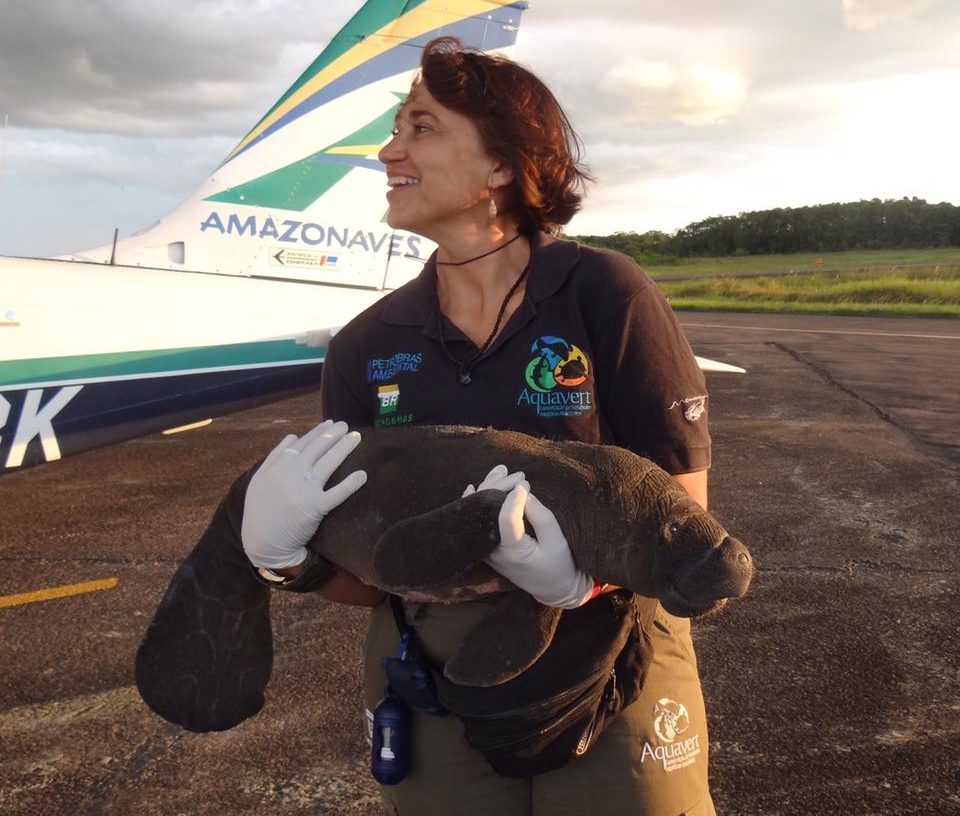
Amazonian manatees (Trichechus inunguis) are the largest freshwater mammal in Brazil. They can grow to 3 meters (10 feet) in length and weigh 500 kilograms (1,100 pounds). They are herbivores and they feed on a diet of aquatic plants. Although they are big, they are so hard to spot in the water that they are sometimes called a “ghost animal.”
Amazonian manatees were hunted for their leather from the 1930s to the 1950s. This led to a big drop in the number of manatees. In Brazil, manatees have been protected from hunting since 1967.
Researchers interested in finding out the current health of the manatee population carried out a survey in the central Amazon state of Amazonas. In the Piagaçu-Purus Sustainable Development Reserve they found several signs that the manatee population is bouncing back.
The researchers were surprised to find that many manatees live near human settlements. Some areas, like floodplains, seem to be good homes for both people and manatees. Local knowledge is important to protecting the forests and the lakes and waterways where the manatees live.
Although hunting is now banned, manatee calves sometimes get tangled in fishing nets or are orphaned for other reasons. Manatee rehabilitation centers have been established to help care for orphaned calves. The goal is to release the calves back into the wild. Calves live in the rehabilitation centre for 3-6 years before being released. It is expensive and hard work. One recently released manatee was found to be pregnant, which is a good sign of a successful reintroduction.


Adapted from an article on Mongabay.com, first reported here on Mongabay Brazil.






